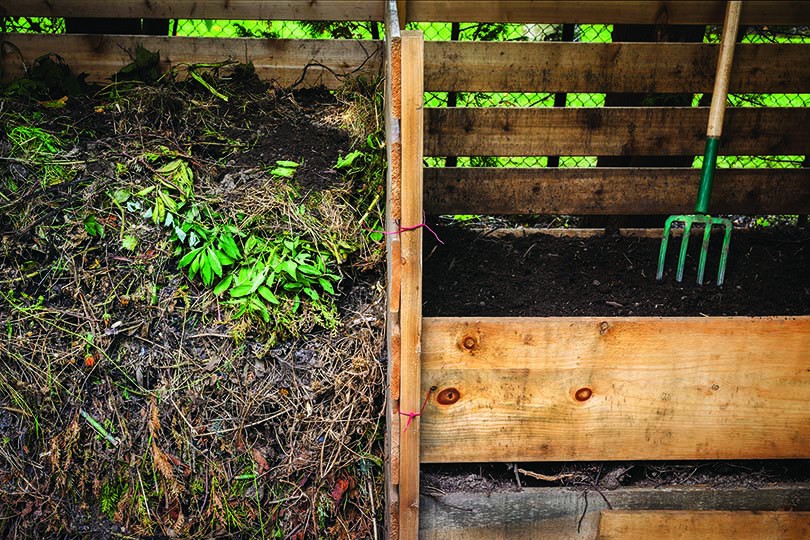It takes practice, time and the right amount of browns and greens
By Kristen Hannum
It’s August. Time to stop putting off building a compost bin.
That’s what I told myself a few years back, anyway, when we had a compost tumbler for our kitchen scraps and yard debris. But it wasn’t big enough.
In addition to the nice compost in its black, plastic belly, we also had bags of leaves, seemingly endless barrels of yard debris and growing piles of wood chips from trimmed boughs from cotoneaster bushes that colonized the entire north side of the house.
Not only that, but we had a back corner ringed by trees and beyond that open space, which was crying out for compost bins. I imagined us emptying bags, barrels and wheelbarrows full of leaves, manure, wood chips and even chopped pine needles that would turn into the perfect compost for our too-alkaline soil. It was near my favorite tree, a twin-trunked, graceful old Scotch pine, and I hoped that putting the bins there would mean compost juices would leach into the ground and feed the tree.
Not many things in life turn out exactly as planned, but my compost bins did. Sure, we shook our heads over how we kept failing to get enough green into those bins and enough brown into the compost barrel, but it was close enough.
Practiced gardeners know about green and browns in the not-secret-just-tricky art of composting. For the not-yet-initiated, greens are nitrogen-rich additions like kitchen scraps and grass clippings; browns are carbon-rich additions, like wood chips and dried leaves. Straightforward? Not at all. Coffee grounds are greens, as is manure.
We built our bins out of wood pallets that I found for free on Craigslist. I made sure they were all the same size. I bought some L-brackets because an online source said they are needed, but my husband, wielding the power drill, preferred a grab bag of brackets and screws he had in the basement. He built a three-sided bin and then added another two pallets to make it a double bay.
We didn’t put a top on it and we left the bays open, not trying to hinge doors to them. Nor did I try to grow vines up its sides in an attempt to make it prettier. I did, however, plant an iris garden at its side, hoping the thirsty irises would help me remember to water the compost.
We filled both bins with the leaves that fell that autumn. Because of the excess of brown, I added green ingredients and watered the piles. They grew warm. Warm enough that a feral cat regularly slept on top of the slowly composting refuse that winter.
There’s no foolproof guide to composting. I’m proof of that. Here, however, are four basic rules from the Rutgers Cooperative Extension:
1. The pile should be slightly damp, like a squeezed-out sponge.
2. It should contain two parts nitrogen-rich green materials and one part carbon-rich brown materials.
3. You need to turn the stuff regularly, whether it’s in a tumbler or in a bin.
4. Make it the right size: at least 3 feet by 3 feet but not bigger than 5 feet by 5 feet. Microbial activity is what cooks the compost, and a right-sized mass keeps the heat in but isn’t so big that air can’t reach the microbes at the center.
Even if there are mistakes along the way, you’ll still eventually end up with great compost. Practice may not make perfect, but it will be close enough.

